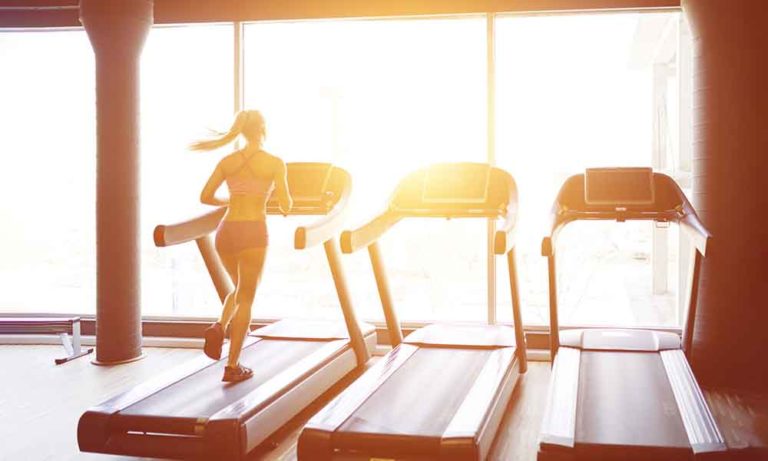How Running Affects Your Knees? (Don’t Worry, It Will Not Ruin Them!)
Running or walking does affect your knees. Well! Is it good or bad? It depends on how you perform this exercise. If you maintain proper form, running STRENGTHENS your knees.
However, you might be reading this because you are experiencing knee pain while running. Despite the myths, running actually makes your knees stronger.
Will Running Ruin Your Knees?
- Running with proper form and supportive shoes is not harmful to your knees.
- Running may still cause knee pain due to several other factors.
- Runner’s knee (Patellofemoral pain syndrome PFPS) is the most common knee injury among runners.
- Stop running if you experience knee pain.
- You can treat the pain by understanding the cause and gradually building your stamina.
- Exercises that build core strength can help you improve your running form and reduce the risk of knee injuries.
So, what causes knee pain when you run or walk and how to avoid it?
Is Running Bad for Your Knees? (According to Study)
While running, your knees absorb an impact of up to three times your body weight.
After all the pounding they take, we psychologically feel that the knees are working too hard. But the research states otherwise because knee cartilage keeps getting healthier with time as you run.
That’s why avid runners stay mobile and healthy even at old age.
To understand the mechanics of this paradox, University of Maryland researchers conducted a study.
They analyzed the effect of running on knee cartilage using gait analysis, knee contact mechanics, and musculoskeletal modeling.
The associate professor of kinesiology. Dr. Ross Miller studied the effects of running-induced stress on knee cartilage. In animals, instead of wearing down, the cartilage becomes more resilient. They were curious to know if this phenomenon also applies to human beings.
Gathering Data From Runners And Walkers
During their research, Miller’s team gathered data from 22 healthy subjects actively running and walking. They collected data for parameters such as gait and the force they applied on their foot with each step they took.
They used it to create a computer model which estimated the deterioration of healthy knee cartilage with time.
Per their estimation, if the cartilage only breaks and does not repair itself, the runners and walkers have a high chance of developing bone-related issues such as arthritis.
Computer Modeling For Measuring The Impact
According to the study, by 55, the regular walkers had 36%, and regular runners had a 98% chance of developing arthritis. These numbers seem meaningless as they are not per reality.
However, they made sense once the researchers included the knee’s ability to repair itself. If these numbers are wrong, the cartilage in the knees of active people should get thicker and stronger with time.
The only plausible explanation is that they factored the same into the computer model. This theory gave closer results to the 13% proven arthritic prevalence in daily runners.
What Causes Pain in Your Knees When You Run or Walk?
Although running and walking are not the potential cause of pain in knees, it does not mean that your knee pain is not legitimate.
There are a few other reasons for this pain.
1. Runner’s Knee
You can suspect the runner’s knee if the pain is around the knee cap or in the front.
It occurs due to the stress between the thigh bone and the knee cap, irritating the cartilage.
2. IT Band Syndrome
Your iliotibial band, when tight, can cause pain in the outer knee. This long tendon starts from your hip and attaches to your outer knee.
3. Jumper’s Knee
Patellar tendonitis connects your kneecap and shin. When inflamed, you feel pain in the front of the knee.
So, if this is where you experience pain, you need to get a proper diagnosis.
4. Bursitis
There are tiny, fluid-filled sacs in the knee called the bursa. If any of them are inflamed, you can see a swelling on the knee in the front.
5. Osteoarthritis
Osteoarthritis is the deterioration of bones over time due to various factors. The bones become brittle, and their repairing ability is also slow-paced.
People suffering from this condition cannot recover from workout stress as quickly.
It is important to note that Osteoarthritis is higher in non-runners than in runners at later stages of life.
Precautions to Prevent Knee Pain
Those medical conditions require the doctor’s supervision to get rid of knee pain.
But there are other minor but important issues that you can fix yourself or under the guidance of a trainer.
1. Poor Form
Having a proper running form, you can save energy, increase performance, and prevent injuries.
- Look straight and keep your arms at 90 degrees when you take strides.
- Do not hunch back or have poor posture as it leads to overuse of certain muscles leading to other injuries.
- Knees, back, heel and foot are affected due to poor form.
Also, check your posture from time to time as you might begin to hunch easily during initial practice days.
2. Watch Your Heel
Do not strike heel to the ground with every step, as knee pain is the major cause.
You should aim for a midfoot strike for better balance and distribute the impact properly. Taking quick, uniform strides is vital while considering all the aforementioned.
Note that poor running form and excessive heel strikes can also lead to other injuries, like plantar fasciitis, which is quite common among runners.
3. Overuse
You cannot just start and keep running for miles and then complain about the pain. Your joints, ligaments, and muscles can tolerate only a certain amount of stress.
Beyond that, they begin giving up, leading to injury.
You should strengthen them gradually but not overuse them. When they build up enough endurance, they can support longer workouts safely.
4. Proper Gear
Good running shoes make a lot of difference. From fitting to cushion, everything matters. Your foot absorbs the impact with each strike.
The cushioning and shock absorption of your running shoes degrade gradually over time, with a typical lifespan of 300-500 miles. So you should replace your old running shoes even before they start to feel uncomfortable on your feet.
You are not running safely unless your shoes have proper width, arch support, and cushion.
How Can I Strengthen My Knees?
You can easily strengthen your knees at home.
Resistance bands are one of the easiest ways to strengthen muscles at home.
Strengthen your quadriceps, calves, hamstrings, and glutes. Bulgarian split squats, reverse Nordic curls, and single calf raises are also excellent exercises.
When Should I Avoid Running Because of Knee Pain?
Injuries within the past year are the leading risk factor for knee problems. It is terrible for your knees if you attempt to run before existing knee pain, stiffness, or injury has fully healed.
Listen to your body if you experience knee pain or stiffness during or after running. If you still feel discomfort after several days of rest, consult a doctor, who may refer you to a physiotherapist.
Quick Tips to Keep Your Knees Safe
While running, a little extra knowledge of what to do and what not to do keeps your knees safer.
Following these quick tips can help your walking and running be more enjoyable.
- Avoid running on rigid surfaces such as concrete and cement
- Always follow the routine of stretching, i.e., warm-up, run/walk, and cooldown
- Long-distance runners should stick by the 10% rule, i.e., increasing only 10% of mileage every week.
- Take it slow and allow the body to adapt, repair, and recover itself
- Knee sleeves or long compression socks provide extra support when you run
If you are keenly interested in pinpointing the cause of knee pain, getting a biomechanical analysis of your running form can help.
It can help you understand running dynamics and where you are making a mistake. Once you identify it, correcting it is easy.
The Bottom Line
By now, you are aware that daily running or walking does not increase the chances of knee pain compared to non-active people.
However, the underlying issues are responsible, genuine, and need attention.
You should proceed further based on their nature, i.e., are they short-term, long-term, or just correctable issues.
Keep your knees in good shape – running and walking can be very painful when you have knee pain. Additionally, runners may suffer from many common foot injuries.



